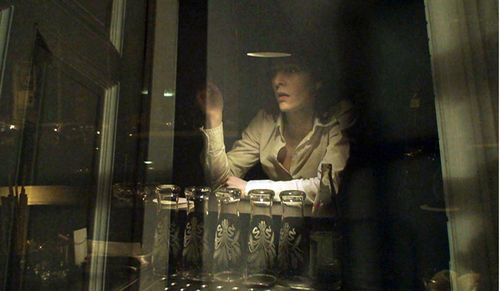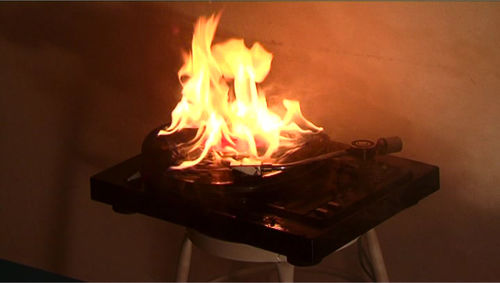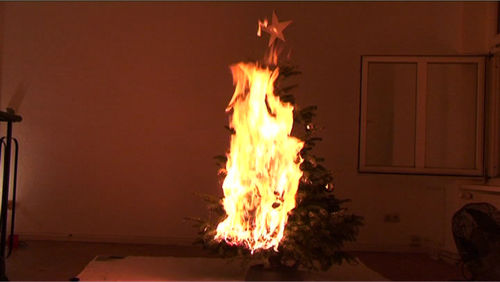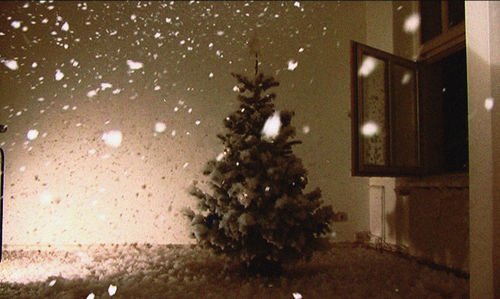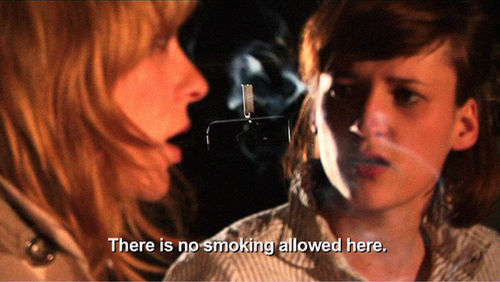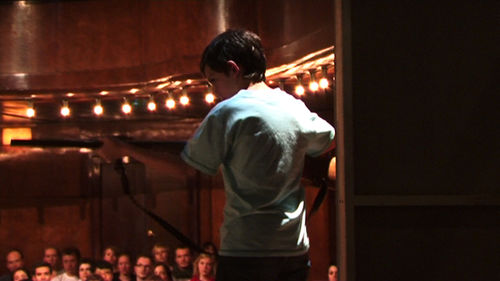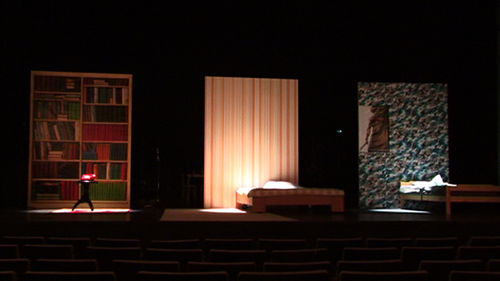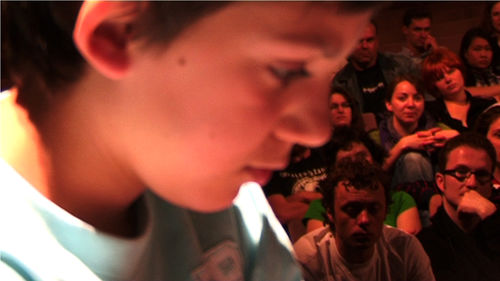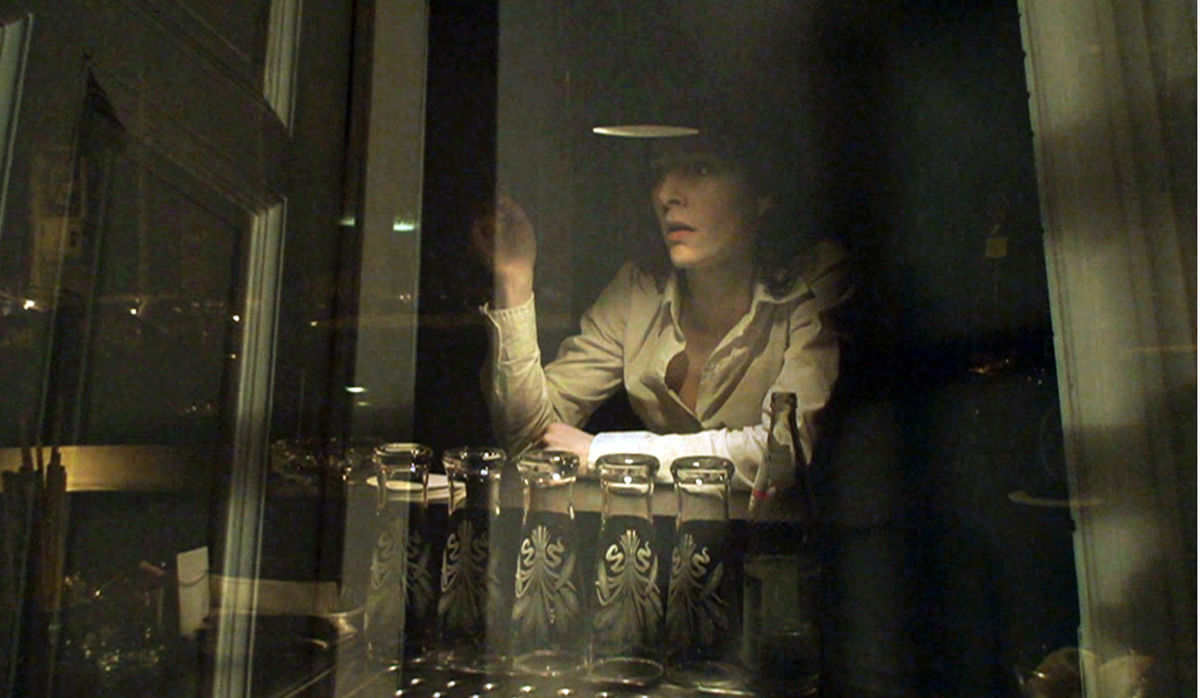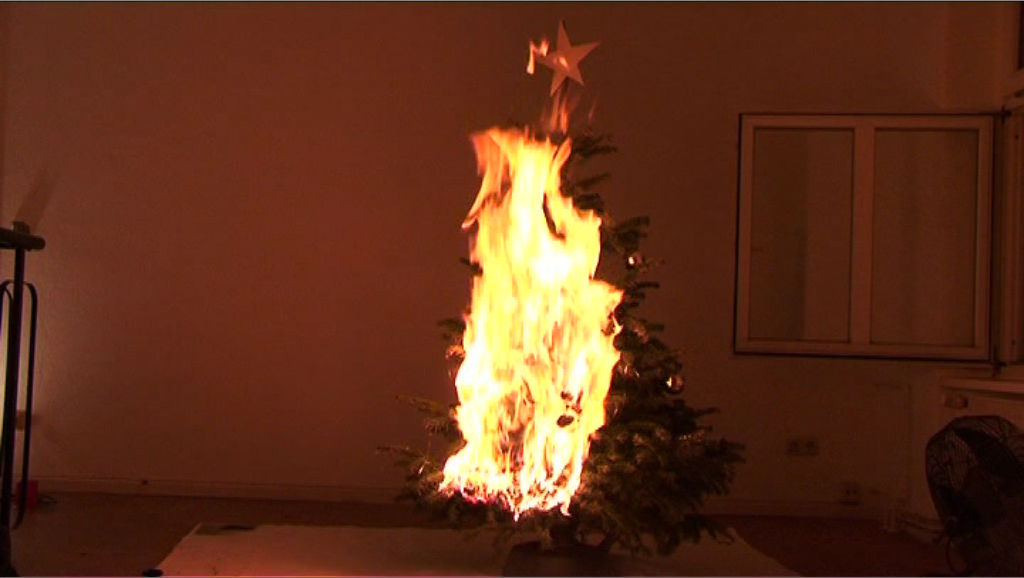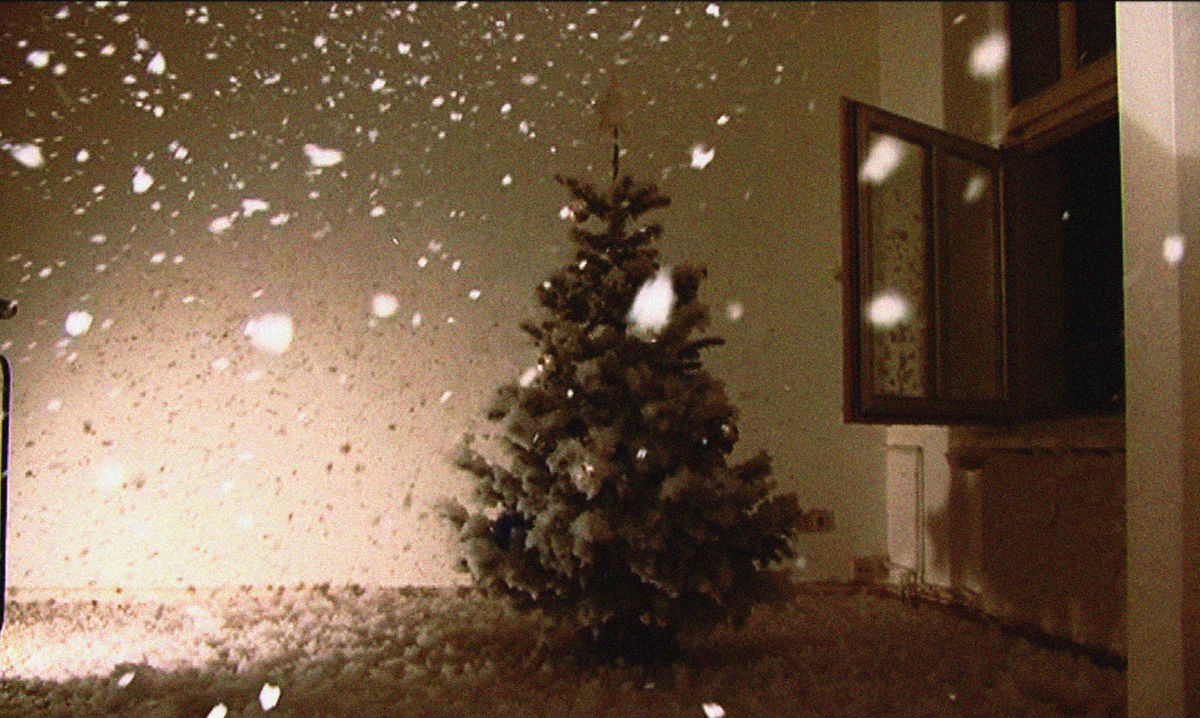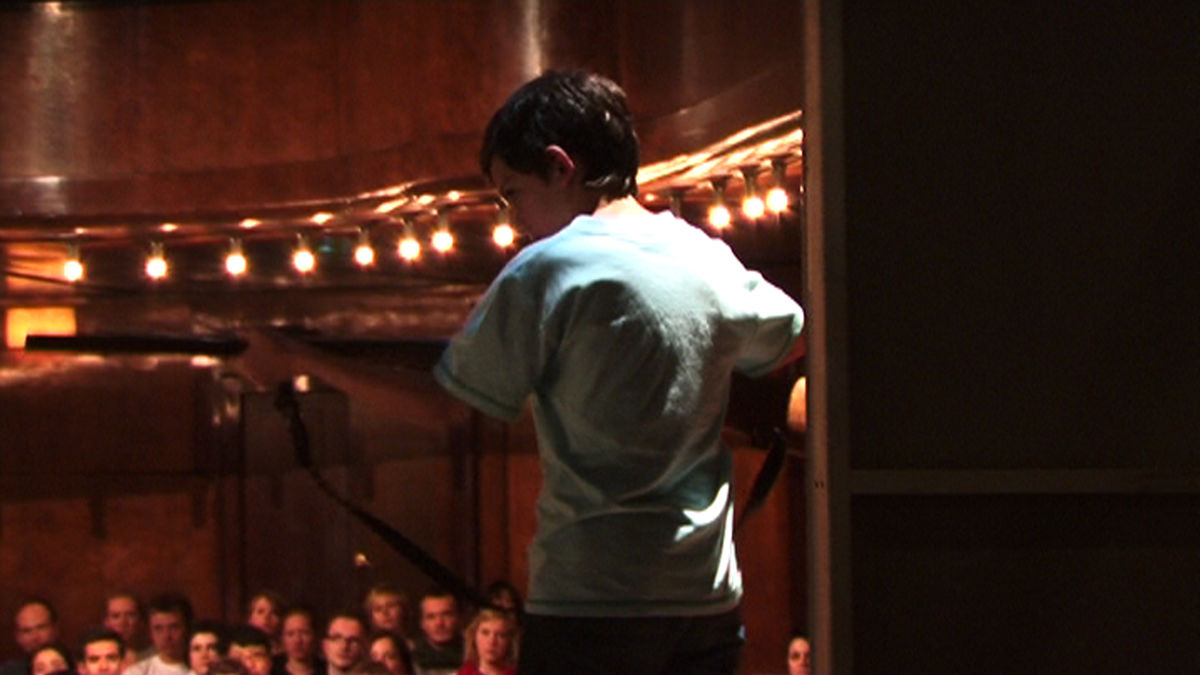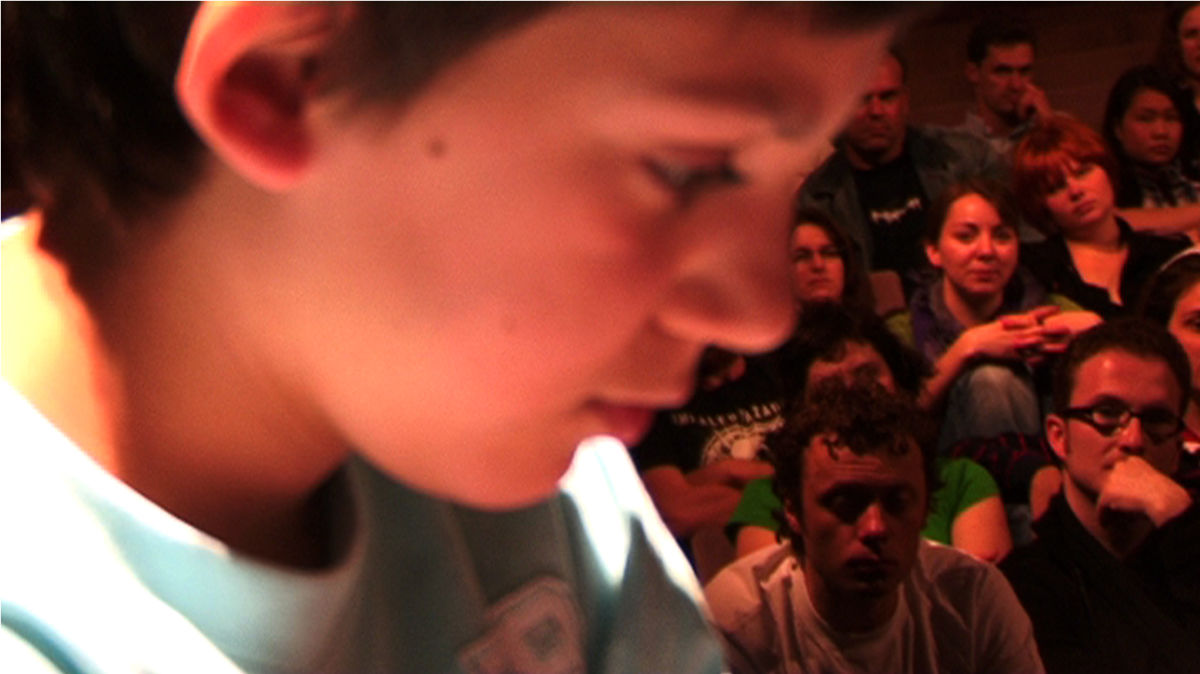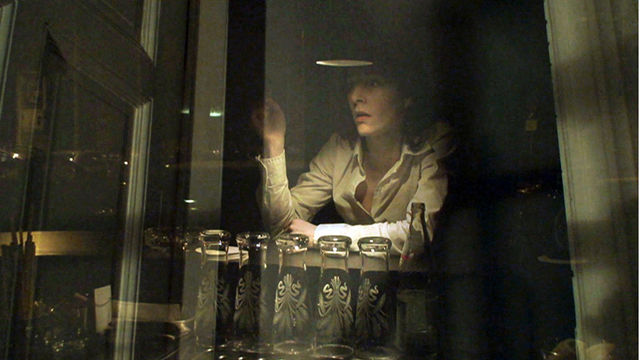
Hammer Projects: Keren Cytter
- – This is a past exhibition
Born in Tel Aviv and currently living in Berlin, Keren Cytter makes films that portray characters entangled in complicated relationships, simultaneously connected to and alienated from one another. Inspired by direct experiences and observations of her surroundings as well as the films, plays, and novels of such luminaries as Alfred Hitchcock, John Cassavetes, Roman Polanski, Jack Smith, Tennessee Williams, and Samuel Beckett, her work is carefully scripted and produced while maintaining a sense of spontaneity and unpredictability. While past films have been shot in her apartment with a cast of friends and acquaintances, her untitled work for last summer's Venice Biennale was filmed with professional actors on a stage with a live audience, exploring the notion of identity in relationship to role-playing. Cytter's nonlinear narratives and use of a hand-held camera create absurdly abstract sequences of highly dramatic interactions and events, infused with both humor and pathos.
Organized by Anne Ellegood, Hammer senior curator.
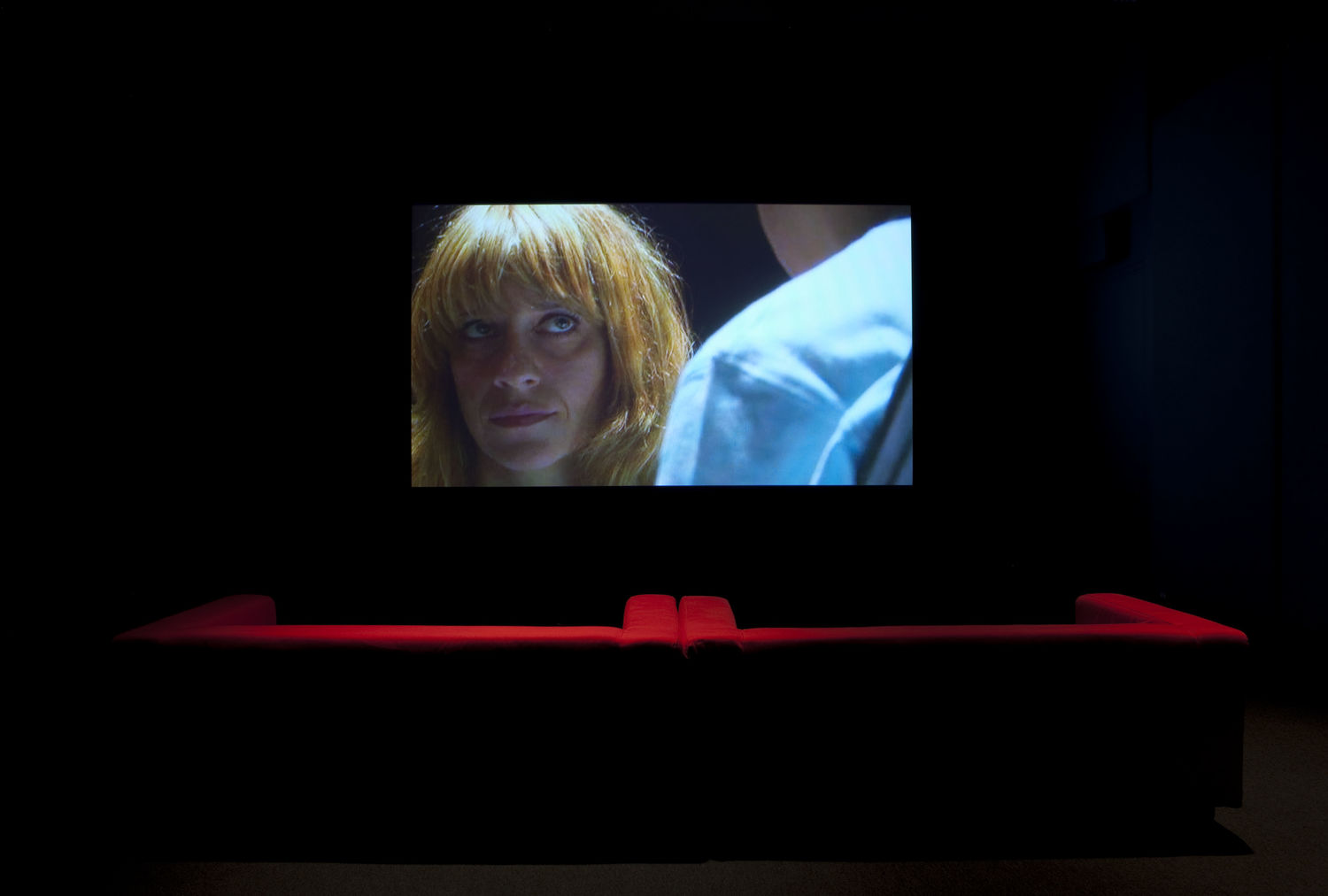
Biography
Keren Cytter was born in Tel Aviv, Israel in 1977. She studied at The Avni Institute in Tel Aviv and at de Ateliers in Amsterdam before moving to Berlin, where she currently lives. Cytter’s work has been the subject of numerous one-person exhibitions at venues including Tate Modern Turbine Hall, London; X Initiative, New York; Witte de With Center for Contemporary Art, Rotterdam; Museum Moderner Kunst Stiftung Ludwig, Vienna; KW Institute for Contemporary Art, Berlin; and Kunsthalle Zürich, Zürich. Her work has been included in thematic exhibitions including Faro Mondi / Making Worlds at the 53rd International Art Exhibition, La Bienniale de Venezia, Venice; Television Delivers People, Whitney Museum of American Art, New York; Manifesta 7, Trentino; and Talking Pictures, K21 Kunstammlung Nordhein-Westfalen, Düsseldorf.
Essay
In the trailer for Michelangelo Antonioni's 1966 film Blow-Up, a male voice-over proclaims, "Sometimes reality is the strangest fantasy of all," expressing a sentiment often used to justify the transposition of real-life events into the realms of fictional literature and film. Antonioni was a member of the Italian neorealist movement and was also influenced by the French New Wave, so that by the time Blow-Up was released, an interest in bringing the realities of daily life into fiction was well established. But the film’s mash-up between reality and fantasy differed greatly from the director's more socially conscious previous forays into neorealism. Set in 1960s London, Blow-Up portends to be a sexy but relatively straightforward thriller about a fashion photographer, Thomas Hennings, who inadvertently discovers a murder in the park. Despite its depiction of the glamour and newfound liberalism of this swinging era, at its heart, the film is about the ontology of photography and cinema and the evidentiary power of the image. The title itself refers to the technique of enlargement, a process that the protagonist uses to help clarify what the camera has captured but that is quickly revealed to also distort the image.
In Israeli artist Keren Cytter’s film Les ruissellements du diable (The Devil's Streams, 2008), references to Blow-Up are evident. Rather than taking Antonioni’s film as direct inspiration, however, Cytter returns to the short story upon which it was based, Argentinean Julio Cortázar’s “Las babas del diablo” (The Devil’s Drool) of 1959, underscoring the interplay between the genres of fictive narrative and filmmaking and also distancing her project from the visual language of the now-iconic Blow-Up. Antonioni took many liberties with Cortázar’s story, changing the story line, the location, and the main character’s vocation, from translator and amateur photographer to professional fashion photographer. He also ignored some of the more experimental structural aspects of Cortázar’s writing in favor of a linear narrative, even though he defied one convention of the mystery genre and left the murder unresolved.
Cytter follows Cortázar’s story more closely, returning the action to Paris and incorporating passages into a voice-over narration. She participates in the type of self-conscious postmodern investigation of form and process that informs Cortázar’s work and that also became a defining characteristic of the New Wave, which embraced such cinematic techniques as forgoing the studio set in favor of filming on location, actors speaking directly into the camera, erratic scene changes and jump cuts, and the use of nonprofessional actors. Cytter structures Les ruissellements du diable as a series of short but interconnected scenes, suggesting that the order of their viewing could be rearranged without disrupting or adversely altering the overall work or the viewer’s understanding of the events. In a nod to Jean-Luc Godard’s penchant for inserting graphics into the middle of his films, credits are shown at the beginning and end but also suddenly appear in the middle. The viewer is allowed to piece together the various elements and to imagine other outcomes. This problematizes the role of the artist, situated between tightly held yet arguably irrelevant (or at least redefined) notions of fact and fiction.1 The narrator, reading from Cortázar’s story, articulates it perfectly: “I cried out. I realized that only the photo existed. I thought I was having an influence on reality by creating these freeze-frames, these floating images, but I did not even exist."
Like several of Cytter’s early film and video works, Les ruissellements du diable was shot largely at the artist’s home in Berlin. In the course of the film the male and female leads shift from being distinct individuals in a relationship to seemingly merging into the same person, as Cytter’s use of match cuts makes it appear as though they are smoking the same cigarette or drinking the same cup of tea. In many scenes they are alone but in synch, like two sides of a coin. Eventually they meet in the park, where it is as if they embody both the subjects of the enlarged photograph that figures prominently in the story and the protagonist who takes the photograph and becomes fixated on its relationship to reality.
In her film Four Seasons (2009), Cytter takes a more spectacular approach to the Hollywood thriller or film noir genre while also playfully employing tropes of kitschy soap operas and lo-fi special effects. She briefly returns to Antonioni in the opening scene as the dramatic piano score by Ferrante and Teicher plays from a spinning turntable, just as Herbie Hancock’s music was played on a record by the fashion photographer in Blow-Up. The absurdist story line and stilted and repeated dialogue speak to Cytter’s interest in the avant-garde dramaturgy of Bertolt Brecht and Samuel Beckett. The story revolves around a woman entering her neighbor’s apartment in order to ask him to turn down the music only to find him bleeding in the bathtub, the apparent suicide attempt inspired by Roman Polanski’s 1976 film The Tenant. As in Polanski’s film, the architecture plays as vital a role as the characters, and periodically a voice-over reads a text, written by Cytter and influenced by Jorge Luis Borges’s “The Immortal,” describing labyrinthine architecture. The two characters embark on a strange relationship, caught somewhere between genuine attraction and utter confusion. He continually refers to her as “Stella,” perhaps after the troubled centerpiece of Tennessee Williams’s A Streetcar Named Desire—another visitor who comes uninvited and then changes the course of the lives around her—and she continually tells him that her name is Lucy. The deadpan delivery of the untrained actors adds to the realism, making us constantly aware of the viewing process and the multiple facets that make up such a project—the script, the story line, the sets, the costumes, the editing—and disallowing the type of suspension of disbelief that often figures into the dreamscape of cinema. The film climaxes with a kitchen-table celebration featuring an abundance of cake and wine that devolves into chaos when the wine turns to blood, the house fills with smoke, and the man appears to ignite the objects around him—the cake, the turntable, a Christmas tree—using pyrokinetic powers, like a character out of Stephen King’s Firestarter.
In the most recent work on view here, an untitled film made for the 2009 Venice Biennale, Cytter used both professional and untrained actors and shot the action at the Hebbel am Ufer theater in Berlin in front of a live audience. Taking as its inspiration John Cassavetes’s movie Opening Night (1977), the film centers on a woman preparing to go on stage as she confronts her own life, highlighting the role-playing that accompanies the construction of identity, whether actual or fictional. The artist’s turn to the theater intentionally brings the typically hidden backstage into the picture, and the uncertainty surrounding the various characters and their situation is more pronounced than in Cytter’s previous works. The inclusion of shots of the audience watching the production adds another layer to the experience of viewing—we are watching them watch the actors, putting into sharp relief the spatial and temporal displacement enacted by the museum context of the video projection in the black box. We are further removed but somehow are granted more insight into the machinations of what is occurring in the work. With the moving-image medium, multiple viewpoints are provided, and we almost feel as if we are moving around the stage with the actors, rather than remaining politely and passively seated like the audience members in the theater.
A number of contemporary artists who use film and video as their primary medium have taken up the many ways in which real life informs fiction and, increasingly, fiction relies upon so-called realism. Many have examined this phenomenon within various international film industries—Christian Jankowski, Isaac Julien, Julian Rosefeldt, Candice Breitz, and Pierre Huyghe—and others have powerfully examined the impact of this phenomenon on the documentary genre and the recording of history—Omer Fast, Matthew Buckingham, and Walid Raad. Cytter, too, participates in this rich terrain of cultural exploration, and the fact that she draws equally from her surroundings—the things that take place in her life and the lives of her friends—and a wide-ranging archive of influential films, plays, and novels speaks to the artist’s particular brand of realism, in which characters are developed as a strange amalgamation of direct experiences and mediated cultural references, slightly schizophrenic embodiments of diverse playlists. The role-playing so evident in Cytter’s works quickly becomes familiar, not because we understand the characters as individuals or necessarily connect to them as people, but because we recognize that this level of stylization and performativity is everywhere around us.
Notes
1. This empowerment of the viewer (or reader) at the expense of the artist (or author) relates to the influential works of French theorists Roland Barthes and Michel Foucault; see Roland Barthes, “The Death of the Author” (1967), in Image—Music—Text, ed. and trans. Stephen Heath (New York: Hill & Wang, 1977), 142–48, and Michel Foucault, “What Is an Author?” (1970), in Aesthetics, Method, and Epistemology, ed. James D. Faubion, trans. Robert Hurley et al. (New York: New Press, 1998), 205–22.
Hammer Projects is made possible with major gifts from Susan Bay Nimoy and Leonard Nimoy and The Horace W. Goldsmith Foundation.
Additional generous support is provided by the Los Angeles County Arts Commission, Good Works Foundation and Laura Donnelley, L A Art House Foundation, the Department of Cultural Affairs, City of Los Angeles, and the David Teiger Curatorial Travel Fund.
Hammer Projects: Keren Cytter has also received support from Artis-Contemporary Israeli Art Fund, the Consulate General of Israel in Los Angeles, and Joel Portnoy. Courtesy of Schau Ort, Elisabeth Kaufmann/Christiane Buentgen Zurich, Christian Nagel Gallery Cologne/Berlin/Antwerp, Pilar Corrias Gallery London.



